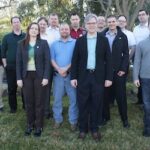|
|
This video is part of the appearance, “Ruckus Wireless Presents at Wireless Field Day 2“. It was recorded as part of Wireless Field Day 2 at 16:00-18:00 on January 27, 2012.
Watch on YouTube
Watch on Vimeo
David Stiff and Wilson So from Ruckus Networks presented on the 802.11u protocol during their session at Wireless Field Day 2. The primary goal of 802.11u is to enhance the user experience in connecting to Wi-Fi networks, making it as seamless as connecting to cellular networks. Traditionally, users face a cumbersome process to connect to Wi-Fi, requiring them to find an SSID, enter credentials, or navigate through captive portals. With 802.11u, this experience is significantly simplified, enabling devices to automatically connect to available hotspots, thus ensuring a smoother transition between cellular and Wi-Fi networks without user intervention.
The presentation detailed how 802.11u operates, highlighting its dual requirements for access points and clients, as well as its ability to improve network discovery and authentication processes. Stiff and So explained the protocol’s reliance on elements like Generic Advertisement Service (GAS) for clients to query access points and the Access Network Query Protocol (ANQP), which provides essential service information, such as supported authentication methods. This capability not only allows devices to determine which services are available but also enables automatic selection of the most appropriate service based on user preferences and device compatibility, streamlining the connection process.
The speakers also addressed concerns regarding user control and preferences in connection management. While 802.11u seeks to automate connections for convenience, there are worries that this could limit user agency over which networks their devices connect to. Stiff and So indicated that while the protocol allows for enhanced automation, the implementation could vary between device manufacturers, thus impacting user choice. As 802.11u progresses towards certification and broader adoption, potential business opportunities for service integration and roaming hubs emerge, allowing public and private networks to work in tandem to provide superior connectivity options.
Personnel: David Stiff, Wilson So









